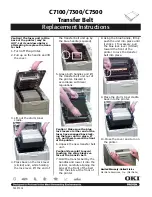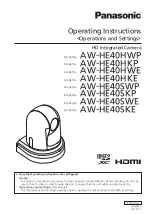
Co de 39
Nugget
Operating the Terminal in a Network
4-27
4
To set up the DCS 300
•
Configure a peer-to-peer destination name for the host application. Create a
transaction ID, $NGCFGRSP, that will be routed to this destination name. The
DCS 300 uses the transaction ID to route responses from the T2425 back to the host
application. $NGCFGRSP is a special transaction ID that the server uses to forward
configuration response data from a terminal.
All configuration responses will be routed with the $NGCFGRSP transaction ID.
The DCS 300 cannot keep track of multiple applications sending reader or
configuration commands. If you have two host applications sending reader or
configuration commands, they must both be configured to receive the $NGCFGRSP
transactions, and therefore both will receive all responses from all T2425s.
To set up the host computer
•
Verify that you can communicate with the DCS 300.
To set up the application
•
Prepare and write a host application that can communicate with the DCS 300 and
send transactions to and receive transactions from the T2425 in this format:
transaction header
TMF field
Configuration command
where:
transaction header
is a 96-byte field containing the message number, date
and time, source application ID, destinations application
ID, transaction ID, and other information. You must set
the system message (SYS$MSG) flag to E in the
transaction header. For help, see the DCS 300 Technical
Reference Manual.
TMF field
is a 2-byte field containing one of these values:
CG
Configuration Get request sent from the host
application.
Cg
Configuration Get response sent from the T2425
to the host.
CS
Configuration Set request sent from the host
application.
Cs
Configuration Set response sent from the T2425
to the host.
Summary of Contents for Trakker Antares 2420
Page 1: ...TRAKKERAntares 2420and2425 Hand HeldTerminal P N 064024 006 User s Manual...
Page 15: ...nuggetf code39 Contents xv Glossary Index G I...
Page 16: ...xvi...
Page 24: ...xxiv...
Page 25: ...nuggetf code39 Getting Started 1...
Page 26: ...1 2...
Page 60: ...1 36...
Page 61: ...Learning How to Use the Terminal 2...
Page 62: ...2 2...
Page 103: ...Co de 39 Nugget Configuring the Terminal 3...
Page 104: ...Co de 39 Nugget 3 2...
Page 134: ...3 32...
Page 135: ...Operating the Terminal in a Network 4...
Page 136: ...4 2...
Page 173: ...Using Custom Applications 5...
Page 174: ...5 2...
Page 193: ...Troubleshooting 6...
Page 194: ...6 2...
Page 219: ...Running Diagnostics 7...
Page 220: ...7 2...
Page 243: ...Reader Command Reference 8...
Page 244: ...8 2...
Page 268: ...8 26...
Page 269: ...Configuration Command Reference 9...
Page 270: ...9 2...
Page 389: ...Terminal Specifications A...
Page 390: ...A 2...
Page 404: ...A 16...
Page 405: ...Full ASCII Charts B...
Page 406: ...B 2...
Page 415: ...International Character Support C...
Page 416: ...C 2...
Page 427: ...Using the Default Applications D...
Page 428: ...D 2...
Page 438: ...D 12...
Page 439: ...Glossary G...
Page 440: ...G 2...
Page 463: ...Index I...
Page 464: ...I 2...
Page 480: ...I 18...
















































